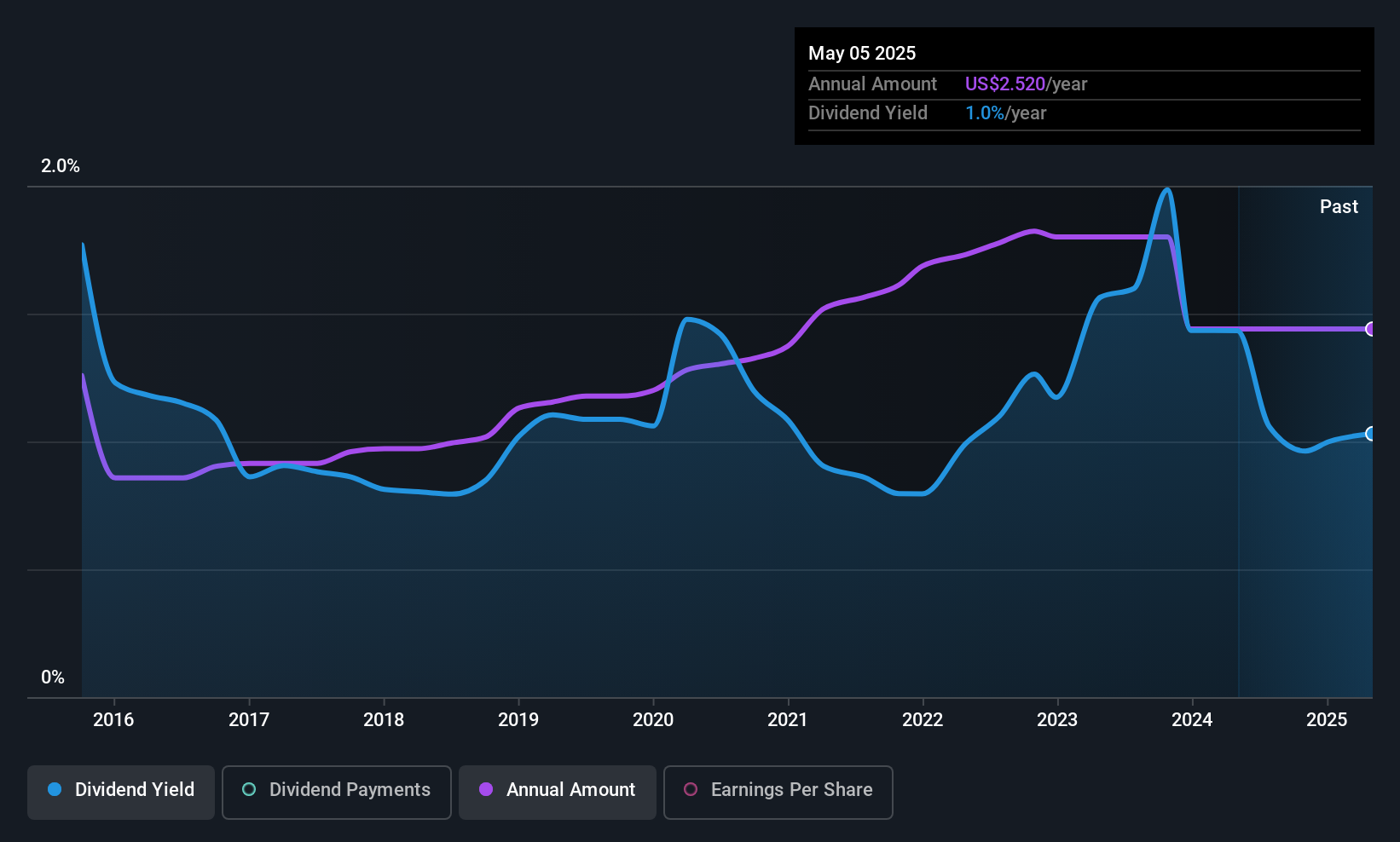- United States
- /
- Banks
- /
- NasdaqGM:HIFS
Hingham Institution for Savings (NASDAQ:HIFS) Is Due To Pay A Dividend Of $0.63
The board of Hingham Institution for Savings (NASDAQ:HIFS) has announced that it will pay a dividend on the 13th of August, with investors receiving $0.63 per share. Including this payment, the dividend yield on the stock will be 1.0%, which is a modest boost for shareholders' returns.
Hingham Institution for Savings' Dividend Forecasted To Be Well Covered By Earnings
It would be nice for the yield to be higher, but we should also check if higher levels of dividend payment would be sustainable.
Hingham Institution for Savings has a long history of paying out dividends, with its current track record at a minimum of 10 years. While past records don't necessarily translate into future results, the company's payout ratio of 16% also shows that Hingham Institution for Savings is able to comfortably pay dividends.
Looking forward, EPS could fall by 3.2% if the company can't turn things around from the last few years. Assuming the dividend continues along recent trends, we believe the future payout ratio could be 18%, which we are pretty comfortable with and we think is feasible on an earnings basis.

See our latest analysis for Hingham Institution for Savings
Dividend Volatility
The company's dividend history has been marked by instability, with at least one cut in the last 10 years. Since 2015, the annual payment back then was $1.40, compared to the most recent full-year payment of $2.52. This implies that the company grew its distributions at a yearly rate of about 6.1% over that duration. A reasonable rate of dividend growth is good to see, but we're wary that the dividend history is not as solid as we'd like, having been cut at least once.
Hingham Institution for Savings May Find It Hard To Grow The Dividend
Given that the dividend has been cut in the past, we need to check if earnings are growing and if that might lead to stronger dividends in the future. Hingham Institution for Savings has seen earnings per share falling at 3.2% per year over the last five years. If earnings continue declining, the company may have to make the difficult choice of reducing the dividend or even stopping it completely - the opposite of dividend growth.
In Summary
Overall, we don't think this company makes a great dividend stock, even though the dividend wasn't cut this year. The company hasn't been paying a very consistent dividend over time, despite only paying out a small portion of earnings. We would be a touch cautious of relying on this stock primarily for the dividend income.
Market movements attest to how highly valued a consistent dividend policy is compared to one which is more unpredictable. At the same time, there are other factors our readers should be conscious of before pouring capital into a stock. Just as an example, we've come across 2 warning signs for Hingham Institution for Savings you should be aware of, and 1 of them doesn't sit too well with us. Looking for more high-yielding dividend ideas? Try our collection of strong dividend payers.
Valuation is complex, but we're here to simplify it.
Discover if Hingham Institution for Savings might be undervalued or overvalued with our detailed analysis, featuring fair value estimates, potential risks, dividends, insider trades, and its financial condition.
Access Free AnalysisHave feedback on this article? Concerned about the content? Get in touch with us directly. Alternatively, email editorial-team (at) simplywallst.com.
This article by Simply Wall St is general in nature. We provide commentary based on historical data and analyst forecasts only using an unbiased methodology and our articles are not intended to be financial advice. It does not constitute a recommendation to buy or sell any stock, and does not take account of your objectives, or your financial situation. We aim to bring you long-term focused analysis driven by fundamental data. Note that our analysis may not factor in the latest price-sensitive company announcements or qualitative material. Simply Wall St has no position in any stocks mentioned.
About NasdaqGM:HIFS
Hingham Institution for Savings
Provides various financial services to individuals and small businesses in the United States.
Proven track record with adequate balance sheet.
Similar Companies
Market Insights
Weekly Picks

THE KINGDOM OF BROWN GOODS: WHY MGPI IS BEING CRUSHED BY INVENTORY & PRIMED FOR RESURRECTION


Why Vertical Aerospace (NYSE: EVTL) is Worth Possibly Over 13x its Current Price


The Quiet Giant That Became AI’s Power Grid
Recently Updated Narratives

GE Vernova revenue will grow by 13% with a future PE of 64.7x

A buy recommendation

Growing between 25-50% for the next 3-5 years
Popular Narratives


MicroVision will explode future revenue by 380.37% with a vision towards success


NVDA: Expanding AI Demand Will Drive Major Data Center Investments Through 2026




